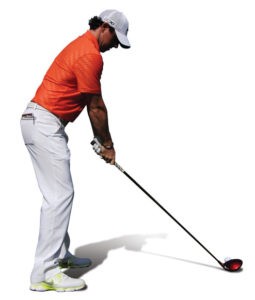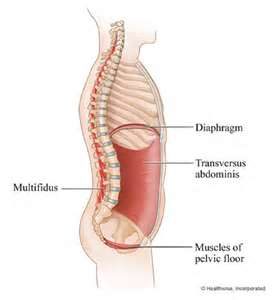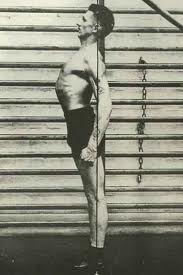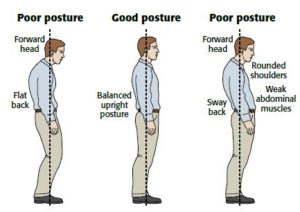Take a look at some of the best athletes in the world and their posture.


All these athletes have very strong postures. Notice the positioning of the spine, rib cage, and pelvis. The rig cage is aligned directly over the pelvis, and the spine is a neutral position for optimal power.


Poor posture at rest feeds poor posture during activity and sports.


 When I ask patients to show me their best posture, their response is often a military like posture with their shoulder squeezed together and their back over-arched. This is far from ideal as it puts un-necessary stress on the low back and the shoulders. Ideal standing or sitting posture should have little to no muscle tension, no squeezing of the shoulder blades, and no excessive arching of the back. Instead, try relaxing the shoulders and standing/sitting as tall as you can. Obviously this might feel un-natural and uncomfortable at first, but as you get used to it over time, your body will reap the benefits.
When I ask patients to show me their best posture, their response is often a military like posture with their shoulder squeezed together and their back over-arched. This is far from ideal as it puts un-necessary stress on the low back and the shoulders. Ideal standing or sitting posture should have little to no muscle tension, no squeezing of the shoulder blades, and no excessive arching of the back. Instead, try relaxing the shoulders and standing/sitting as tall as you can. Obviously this might feel un-natural and uncomfortable at first, but as you get used to it over time, your body will reap the benefits.
Here is how I cue proper posture
- Sit/stand as tall as you can
- Now relax 10 percent.
- Relax the shoulders, you don’t need to pull them together, pull them down, or lift your chest up towards the ceiling. If you need a cue think of Making yourself slightly wider at the shoulders, but don’t force it with too much effort.
- Practice Diaphragmatic Breathing

What not to do?
- squeeze your shoulder blades together
- arch your back excessively
- lift your chest up. Some people cue posture as “Chest Up” or “lead with your chest”, but this is an incorrect cue, can feed bad postural patterns, and excessive arching of back.
- Be stiff. Instead relax and practice proper diaphragmatic breathing. For more on this click here.
- Brace all the time. Abdominal bracing is commonly taught as way to protect the spine, but in a relaxed posture it is not necessary to brace your core. Just relax and breathe. Holding tension or bracing in your abdomen all the time will lead to tightness, digestion trouble, pelvic floor issues, and many others. Yes we need to be able to reflexively turn on our core during activities, but at rest in a healthy spine bracing is unnecessary.
Most of us use too much effort to hold “good posture” so that little 10 percent of relaxation can make “good posture” more comfortable and decrease muscle tension. If you feel tension in any area, try focusing on breathing into those areas, and work on this posture over time to build endurance. You can take breaks between this new “good posture” and your old “bad posture.” The old “bad posture” might even feel good and easy to do, but it will cause you more issues in the long run. Take breaks and build endurance over time. Chiropractic care, rehab exercises, soft tissue work and many other therapies can help make these changes quicker and more permanent.
Some of us due to genetics, development, injuries, or years of poor posture may not be able to get into “ideal posture” comfortably or at all. With these individuals we work with what they have and correct what we can. Forcing a position wont be of any benefit, but if we can make subtle changes in the right direction towards a more ideal posture these subtle changes will have drastic effects on improving health and performance.
And please remember, if you sit or stand still all day, there is truly no perfect posture. The body craves movement and movement is necessary to lubricate the joints and stay athletic. We need to move around. Take calls on a blue tooth, walk around, and take frequent brakes to do exercises and walk. Consider walking, biking, or an under your desk elliptical at your work station to help break up the monotony of being still and burn some calories!
Dr. Ryan Dunn D.C.
